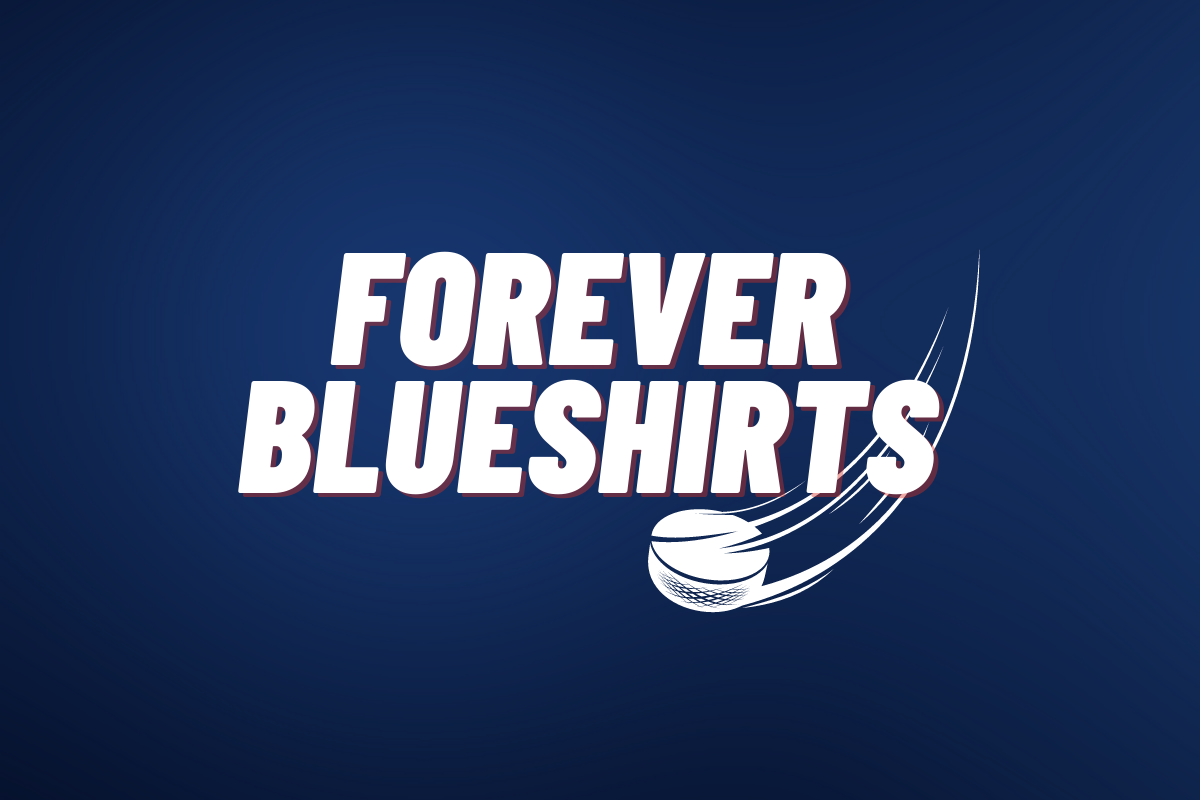Can we now start talking about Pavel Buchnevich as a building block for the future?

Pavel Buchnevich has always been this enigmatic icon among Rangers fans. Even before he ever took the ice for prospect camp, fans all over were drooling over his YouTube highlights; instantaneously warranting the viewpoint that Buchnevich had to be a talent the likes of Vladimir Tarasenko. His first season with the New York Rangers organization was a roller coaster, one marked by highs and lows alike.
The Good
Buchnevich began the 2016-17 season on the opening day roster and through his first six games only managed two assists, despite getting ample playing time of roughly 15 minutes per game. He then turned on the jets in his next four games, scoring four goals and 2 assists. Putting his ten-game total at eight points. Not a bad start to a rookie campaign, eh?
The Bad
However, that’s when the New York Rangers made the decision to shut him down for an extended period in order to strengthen his core, as he was having some back pains. A lot of that has to do with the NHL way of training versus the International. It’s why you see more growing pains with international players coming over to the NHL.
For comparison’s sake, the KHL season lasts 56 games, but unlike the NHL who plays 82 games beginning in October and ending in April, the KHL season plays those 56 games beginning in late August. That’s an eight-month season with roughly seven games per month, as opposed to the NHL average of twelve games per month. Breaking it down a little bit more, a KHL team will usually play 1-2 games per week, whereas NHL teams play 3-4 game per week. It’s very similar to training for a marathon versus a sprint.
The Ugly
Buchnevich then returned to the Rangers lineup in January and over the course of the final 31 games only managed to record another four goals and eight assists. He finished his rookie season with a stat line to 41 GP, 8G, 12A and 20 points. Many fans were disappointed by this, blaming his lack of production on what they perceived to be poor coaching decisions by Alain Vigneault planting him on the fourth line.
Even when given an opportunity in the playoffs, Buchnevich was held to a measly one point over the course of six games and was infamously taken off the roster during the Montreal series in favor of Tanner Glass.
Note: It didn’t help fans’ narrative of blaming lineup decisions for Buchnevich’s perceived shortcomings when Tanner Glass sparked the team’s turnaround vs. Montreal and famously snarked “If you mess with the bull, you get the horns.” Glass also had this comment for fans to pour a little salt on the wounds of those opposed to the move. Despite most initial reactions to this reference, it does hold relevance in this evaluation.
Tanner Glass has a message for you haters. #NYRangers #StanleyCup pic.twitter.com/zqqZGD1Nz1
— Greg Wyshynski (@wyshynski) May 5, 2017
The Current
Pavel Buchnevich has returned with a vengeance. Many will credit this resurgence to Buchnevich finally getting what they have been pleading for, a top line assignment alongside Chris Kreider and Mika Zibanejad. Buchnevich has four goals and three assists for seven points since the promotion. So far this season, Buchnevich has 8 goals and 7 assists for 15 points.
The contrarian view might say that despite his 15 points, eight of them have come on the man-advantage and the issue remains that he’s a -2 on the season. (a stat which I personally don’t love, as it doesn’t tell the whole story usually).
Success Breeds Questions
All signs now point to Pavel Buchnevich becoming the player so many fans hoped he would be when the team first drafted him and brought him over from Russia. His performance forces us now to have two conversations though. The first is, can Buchnevich be a building block piece for the Rangers going forward and in the future? Doug MacLean recently agreed with this point on Sportsnet Hockey Central, mentioning Buchnevich alongside Mika Zibanejad and Brady Skjei as possible core building pieces for this team going forward.
First things first though, and the other conversation we need to have is to take a step back and take an alternate look at the narrative that’s surrounded Buchnevich. Fans for so long have been pleading with beat writers and pleading with Alain Vigneault that Vigneault was hurting the team by not placing Buchnevich in a more prominent role. The perception of Alain Vigneault not trusting young players was something I recently took a look at here on Forever Blueshirts, when I posted the question, “Maybe we’re wrong about Alain Vigneault.”
I’ve seen all the Corsi stats that explain why Buchnevich needed a top line role, and many of them were absolutely compelling. The really interesting part is we will never truly know whether it was the chicken or the egg in this scenario. However, there are a few key points that need to be examined when making your conclusion on this topic.
The Truth
Alain Vigneault employs a very structured system. It’s very unique among NHL standards in that he employs a “man” defensive zone structure as opposed to a “zone.” The Rangers played a zone defense under John Tortorella. The striking difference between the two and the complexity of the “man” defensive zone structure directly correlates to the Rangers ugly start to the 2013-14 season. The “man” defensive zone structure can make even the most skilled defensemen look silly. This could also have a lot to do with the reasoning behind AV’s choice to play guys like Nick Holden and Steven Kampfer over younger players. It’s necessary for the Rangers to play a “man” defensive zone system as it compliments the transition and counter-attack game the Rangers employ much better than a “zone” structure would.
Pavel Buchnevich has always had high-end talent, but top-six players play against the opponents’ top-six players. If you aren’t buttoned up enough in the defensive zone, the holes in your defensive game are more glaring and easily exposed. It’s a big reason why the Corsi numbers don’t truly apply to that narrative. They don’t prove why a guy who has had a certain level of performance on the 4th line will automatically have that same success on a top line (See: Adam Clendening, Emerson Etem).
The Difference

eakhl.com
There’s also the adjustment from the KHL/International rink to the NHL ice. In the NHL, the space between the goal line and the boards is 11′, whereas a KHL rink has 13′. The surface in the NHL is significantly smaller in width as well (85′ wide versus the KHL 100′). Most notably, while both rinks are 200 feet in length, the NHL defensive zone from the goal line to the blue line is 64 feet, 7 feet longer than the KHL’s 58 feet. That’s a lot more room to cover defensively north and south in a tighter space east and west.
The Reality
This all comes down to being able to not be a detriment in the defensive zone. Alain Vigneault is tasked with the responsibility of putting a team on the ice that has the best understanding of his system, both defensively and offensively. He also has the luxury of being able to find scoring throughout most of his lineup. The biggest concern really was making sure that he wasn’t putting the team in harm’s way defensively by giving Buchnevich those minutes. Not only did Buchnevich play his entire life on international ice, he never before played in any defensive zone structure until he came over to New York.
In sports like football, coaches are heralded as a genius and disciplined when they take a talented young player and give him time to learn their system in a lesser role (see Aaron Rodgers). Yet somehow, a large contingent of fans ignore the same fact and learning curve a young player goes through coming over to the NHL. At least in football, the playing surface is the same.
To further this point, in football you get the luxury to put players in where they succeed while they develop where they don’t. You’re able to use a running back who hasn’t developed his blocking game well enough yet as a 3rd down back. In hockey, even if you only start a player in the offensive zone, odds are the play will end up in your defensive zone at some point during his shift. It’s the reason why through all levels of USA Hockey and Hockey Canada, coaches emphasize the importance of being a good “200 ft player.” I can’t tell you the number of times I’ve personally witnessed a highly talented player (at times, the most talented player) get cut from a team because he didn’t play three zones and the team was better off for it.
The Future
Now that Buchnevich has begun to show signs of defensive zone reliability, as well as displaying his scoring ability for all to see, it does seem like he’s here to stay. He isn’t perfect in the defensive zone, but he has been noticeably better. It’s key to point out that during this Rangers six-game winning streak, they have come up large against three very special talents named Steven Stamkos, Nikita Kucherov and most recently Connor McDavid. Against Edmonton, where Vigneault had the last change, he consistently matched the Kevin Hayes line up against McDavid, not the KZB line. He also did the same against Tampa Bay, and you’ll most likely continue to see it against other teams.
Buchnevich has made his biggest impact though on the Power Play, as evidenced by more than half of his points coming on the man advantage. The Power Play as a whole has been a revelation for the New York Rangers and has become an area where they can punish teams.
This isn’t all to Kevin Shattenkirk’s credit though. No matter how you draw it up, a good Power Play needs three elements. A quarterback, a sniping threat, and a net-front presence. Shattenkirk has been that quarterback, and so was Yandle and many who came before them. The biggest difference I’m seeing is that teams can’t overcommit to Shattenkirk because of the threat Buchnevich’s, and by extension, Mika Zibanejad’s, shot poses. This keeps the opponent’s PK honest and ultimately gives Shattenkirk more room to move or shoot the puck.
Only time will tell what Pavel Buchnevich develops into. I see a really good talent in him, but I don’t see a Nikita Kucherov or Vladimir Tarasenko just yet. The thing is, nobody saw Nikita Kucherov coming the way he has (also another offensively gifted player who’s coach brought him along slowly over the years.)
For more on this topic, hear The Tilted Ice’s take on the matter below.
More About:NYR Features
